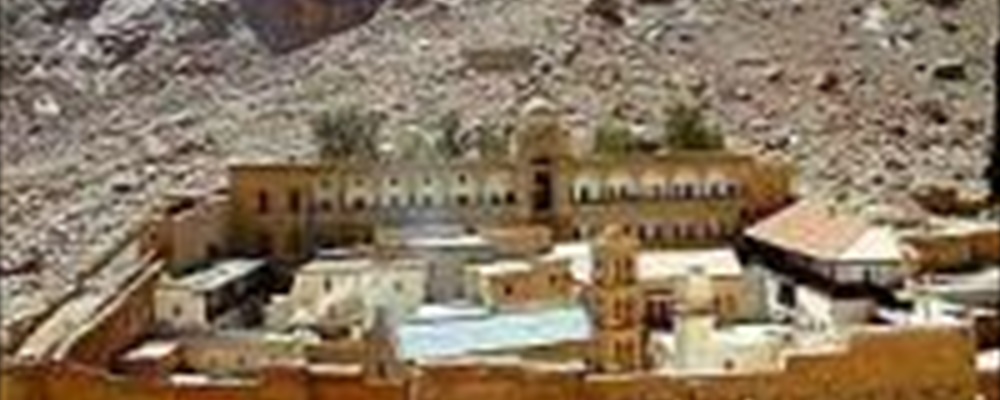
St. Catherine's Monastry & Mount Sinai
( No user reviews )
Book Now
Going to St. Catherine's Monastry & Mount Sinai?
Highlights / General details
St. Catherine is the name of both the monastery and city located at an elevation of 1586 m, and its 120 km away from the closest city, Dahab. St. Catherine’s monastery is located at the foot of Mount Moses to honor the site of the burning bush depicted in the Old Testament. St. Catherine’s has a long history, though not in its current form. During Pharaonic times, the area was under the rule of the pharaohs, and was a center for the mining of turquoise, gold, and copper, with old mines and temples having been found not far from the site of the monastery itself.
During Roman times, a monastery was built at the foot of Mount Sinai, the place where it is believed that Moses received the 10 Commandments from God. (Note that the descent is not too steep, but there are around 500 steps at the very summit.) The emperor Justinian ordered that a monastery be built on this location. The monastery enclosed the chapel of the Burning Bush, which was ordered to be built by Helena, Constantine I’s mother to mark the site where Moses was supposed to have seen the burning bush. It is said that the bush that is located there is the original bush from the story.
The monastery is associated with St. Catherine of Alexandria, who was a Christian martyr. Originally sentenced to die on the wheel, she didn’t die and was beheaded instead. According to legend, St. Catherine’s body was carried to the site of the monastery by angels. It’s said that monks found her remains in 800 AD.
There are many works of art, including Islamic mosaics, Russian icons, oil paintings and relics donated by Tsar Alexander II of Russia and Catherine the Great of Russia. There is even one of the largest and most important collections of illuminated manuscripts in the world at the monastery (the Vatican has the largest). The collection consists of some 4,500 volumes in Greek, Coptic, Arabic, Armenian, Hebrew, Slavic, Syriac, Georgian, and other languages.
Inclusion
Transport by air conditioned vehicle; Qualified Egyptologist guide; Entrance fees to National Park; Breakfast.
Exclusion
Gratuities (optional); Food and drinks, unless specified.
Hours of operation
Available: Daily; Departs at 10:00pm. Hotel pickups commence prior to this time, exact pickup time will be advised on reconfirmation. Returns at approximately 4:00pm, the following day.
Duration
Approximately 18 hours.
Location Departs from selected Sharm el Sheikh hotels. Returns to original departure point, the following day.
Location
Departs from selected Sharm el Sheikh hotels. Returns to original departure point, the following day.
Policies This tour requires 2 passengers minimum in order to operate. Complete information, including local telephone numbers at your destination, will be included on your Confirmation Voucher.
All information requested must be supplied or booking is subject to automatic cancellation
Make a reservation
Please choose your preferred options
Sharm Sharm El Sheikh , Sharm El Sheikh, Egypt
01120237620904
Be the first one to add a review
The photos displayed on this page are the property of one of the following authors:
Tourico
This travel guide also includes text from Wikitravel articles, all available at View full credits
View full credits
This travel guide also includes text from Wikipedia articles, all available at View full credits
View full credits